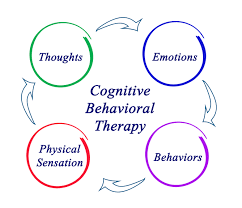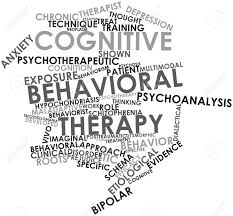
אחד מזקני שבט אינדיאני סיפר לנכדו:"נכדי, בכל אדם שוכנים שני זאבים ובינהם מדי פעם מתחולל מאבק לאורך חייו של האדם. כן, קרב המתחולל בתוך כל אחד מאיתנו הוא בין שני זאבים.
אב אחד הוא הזאב הרע-השלילי: יש בו כעס וטינה , קנאה, צער, תאווה, רחמים עצמיים, רגשות אשם, רגשי נחיתות, הוא פסימי, רואה שחורות, משקר לעצמו ולאחרים, רואה את המציאות בצורה שלילית. האגו שלו נפגע רבות.
הזאב השני הוא הזאב הטוב-החיובי: הוא אופטימי ויש בו שמחה, תקווה, שלווה, אהבה, ענווה. הוא חביב, טוב לב, אמפתי, ויש בו יכולת לסלוח, חמלה, ונדיבות."
הרהר הנכד בדברי סבו. "סבא, מי מי משניהם מנצח במאבק?" שאל הנכד. ענה הסבא: "זה שאתה מאכיל".
סיפור זה מגדיר למעשה את הטיפול הקוגניטיבי, הגישה העוסקת במחשבות השליליות ובטעויות החשיבה שלנו. ישנה טענה כי האדם הממוצע חושב בין אלפי לעשרות פעמים ביום אך לא נותן את הדעת על כך. זאת ועוד, רוב רובן של המחשבות חוזרות על עצמן, שוב ושוב ולכן רובן אינן יעילות. הבעיתיות המרכזית הינה, שרוב המחשבות של המין האנושי מוטעות, מעוותות, לא רצינאליות, או שליליות. ואגב גם לא מעט מהמחשבות החיוביות שלנו מוטעות. דוגמא נפוצה לכך היא: "אם אזכה בלוטו, אהיה המאושר באדם". המציאות הוכיחה שחשיבה זו מוטעית ושביעות הרצון מהחיים אינה בהכרח בסכום הכסף שיש לנו בבנק, ברכוש שבבעלותנו, או בכל דבר מטריאליסי.
מחשבותינו משפיעות על מציאות חיינו, על מערכות היחסים שלנו, על הקשר שלנו עם עצמנו, על רגשותיו והתנהגותינו.

כל מה שקורה וקרה בחיינו החל ממחשבה. לטוב ולרע. אם רק נדע לזהות, לתקן ולפעמים לקבל את הקוגניציות (המחשבות, התפיסות והאמונות) שלנו, להיות מודעים ליתרונות וחסרונות, ולשנות את הפרשנות או משקפי הפירוש שלנו, נשפר את חיינו האישיים, בינאישיים ומקצועיים, את הדימוי והביטחון העצמי ונפתח דפוסים בריאים יותר, נשלוט יותר בחיינו ובסביבבתנו וניצור מציאות שלווה ובריאה יותר.
אנו יוצרים לרוב את מציאות חיינו, בעיקר על ידי האמונות, התפיסות והמחשבות שאנו יוצרים. ותחשבו על זה, טוב?
|